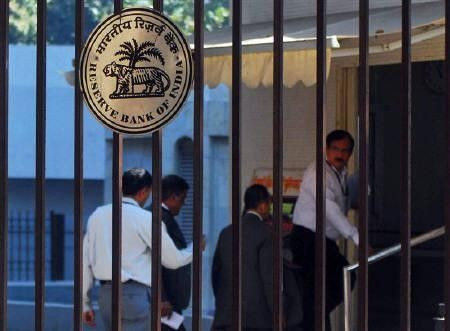RBI Seen Holding Rates Steady, CRR Cut Unlikely

The Reserve Bank of India (RBI) will not cut interest rates at its review on Tuesday, although it is nearly unanimously expected to do so by the end of June, a Reuters poll of 22 economists showed.
7 out of 20 respondents expect the RBI to cut banks' cash reserve ratio (CRR), the proportion of deposits that must be held with the central bank, by 25 or 50 basis points from its current 6 percent on Tuesday.
A CRR cut would ease tight liquidity conditions in the Indian banking system and signal easing intent of the RBI, which remained hawkish far longer than most central banks and raised its policy interest rate as recently as October -- its 13th increase since early 2010.
While none of those polled expect a cut in the RBI's policy repo rate on Tuesday, 8 of 22 foresee a cut by the end of current financial year in March and all but 1 expect the key rate to be cut by the end of June.
The inflationary potential in the economy remains huge. So the Reserve Bank of India is unlikely to risk an interest rate cut or cash reserve ratio on January 24, said Arun Singh, senior economist at Dun & Bradstreet.
The headline inflation slowed in December to a two-year low of 7.47 percent as food price pressure eased dramatically, but manufactured products inflation edged up from November, a sign that core inflation remains sticky.
Factory output grew 5.9 percent from a year earlier in November, the fastest clip since June, recovering from a contraction in the previous month and well above the forecast 2.2 percent growth in a Reuters poll.
The cash rate remains entrenched above 9 percent and banks' borrowings from the central bank's repo counter have averaged 1.22 trillion rupees so far in January, more than double the RBI's comfort zone of 600 billion rupees, a sign that supply is crimped.
That has prompted some in the market to call for a CRR cut, with heavy government borrowing planned for coming weeks.
A 50 basis point in CRR will not dilute the anti-inflationary stance. And the RBI could look at supplementing the CRR cut with more OMOs, said Abheek Barua, chief economist at HDFC Bank, referring to debt buybacks by the RBI through open market operations.
Barua said that if the RBI cuts CRR, it should do so as a liquidity management step, not a rate measure.
Last week, Subir Gokarn, the deputy governor of the central bank in charge of monetary policy, was quoted by a newspaper as saying that lowering CRR will be contradictory to the anti-inflationary stance. A week earlier, he said the interest rate cycle in India had peaked.
The RBI has raised its policy rate by a combined 375 basis points since early 2010, lifting its key lending rate, the repo rate, to 8.50 percent. It has not moved the CRR from its current 6 percent since April 2010.
© Copyright Thomson Reuters 2024. All rights reserved.





















